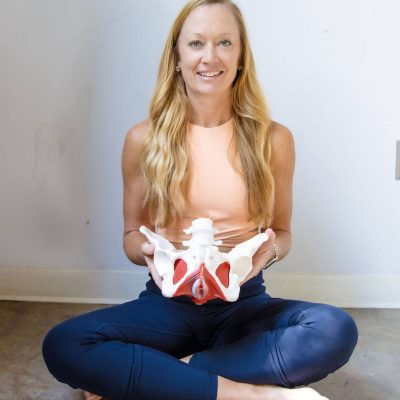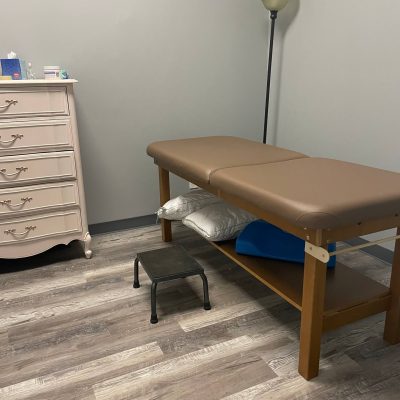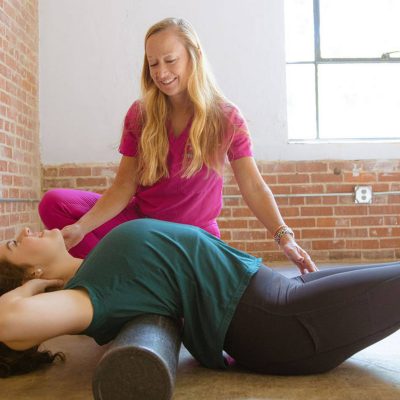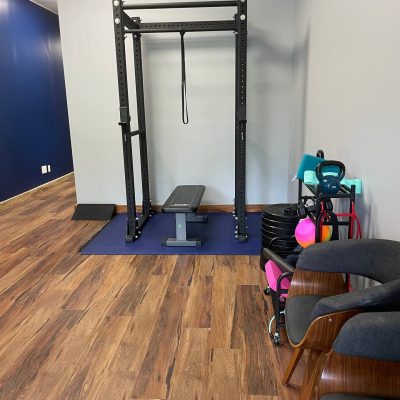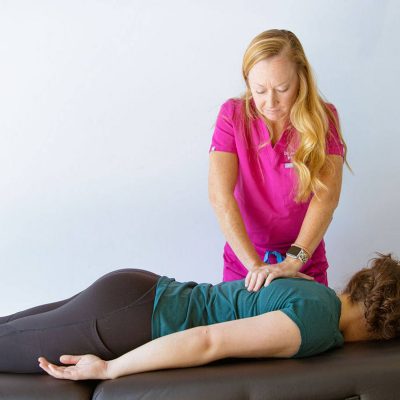Chronic pelvic pain in men is often referred to as Chronic Prostatitis, Chronic Non-Bacterial Prostatitis, or Chronic Pelvic Pain Syndrome. Men in this category have no known prostate infection, but have pelvic pain lasting more than 3 months. Chronic pelvic pain is a challenging and debilitating, but treatable, condition affecting up to 8% of men in the United States (Krieger).
If you’ve been put on multiple antibiotics for chronic prostatitis, you are in the company of many men who have never had any infection in the prostate. The most common type of chronic prostatitis is chronic non-bacterial Prostatitis. Most men have multiple sites of pain, which can be confusing for the patient and medical providers. What most doctors and patients fail to recognize is that structures inside and outside of the urinary tract, particularly the pelvic floor muscles, its associated connective tissues, and/or the nervous system, can play a big role in non-bacterial prostatitis.
Not all pain in the male pelvic region can be attributed to the prostate. This is where a qualified Pelvic Floor Physical Therapist can evaluate for pelvic floor muscle dysfunction and help the patient get to the root cause of the symptoms.
Cyclist’s Syndrome denotes symptoms associated with pudendal nerve irritation or pudendal neuralgia. These symptoms encompass discomfort in the “sit bones,” perineum, genital area, and/or anus, along with pain experienced during sitting or cycling, as well as potential urinary, bowel, and sexual dysfunction. Additionally, there might be sensations akin to a foreign object in the rectum or perineum. Pudendal nerve irritation during cycling can result from a combination of compression (caused by the bike seat horn) and tension (due to repetitive hip flexion).
Numerous studies grounded in evidence demonstrate that pelvic floor physical therapy constitutes a beneficial approach to addressing pelvic pain stemming from tense muscles and constricted tissues, applicable to both men and women. The pelvic floor comprises muscles such as the levator ani, coccygeus, and obturator internus, which can develop adhesions, tension, or trigger points, leading to motion restrictions and pain. These trigger points manifest as palpable spasms or knots within muscle tissue, even affecting pelvic floor muscles, potentially causing adhesions in the fascia and connective tissues of the abdomen, groin, pelvic floor, and subsequently constricting pelvic organs like the colon, uterus, bladder, and prostate gland within the pelvic cavity.
The pudendal nerves and their branches originate from the sacrum (at the back of the pelvis) and traverse the pelvic floor region to innervate the vaginal, penile, and rectal areas. However, these nerves can encounter compression as they navigate through taut muscles and fascia, resulting in compromised pelvic floor functionality and heightened discomfort.
Playing a pivotal role as a core stabilizer, the pelvic floor collaborates with other core muscles—the Transversus Abdominus (the innermost abdominal muscle) and Multifidus (deep lower back muscle. Certain hip muscles also serve as pelvic floor muscles. These muscles work in concert to maintain core strength, flexibility, and prevent lower back pain.. When one of these core stabilizers weakens or sustains an injury, the remaining muscles must compensate, eventually straining the entire core and contributing to back pain, stiffness, and weakness over time.
The pelvic floor muscles directly influence three vital bodily functions: urinary, bowel, and sexual.
In terms of urination, the pelvic floor muscles encompass the urethral opening, relaxing during voiding and exerting closure or tension when not voiding. Muscle spasms can lead to urinary symptoms like leakage, strong urges to void, frequent bathroom visits (urinary frequency), and nocturnal awakenings for urination (nocturia). Women are advised against “hovering” over public restroom toilets, as this sustained partial squat increases pelvic tension and hinders full relaxation of the sphincters around the urethra, impeding complete urination. It’s recommended to use protective toilet seat covers and sit comfortably.
In the context of normal bowel movements, the pelvic floor muscles should be able to expand to facilitate the passage of stool. When not defecating, the pelvic floor maintains tension at the rectal opening to prevent leakage. Weakness in the pelvic floor can lead to leakage, while tightness can result in constipation, prolonged toilet sitting, and straining during defecation. Timely toileting, within five minutes of the urge to void, is advised. Although the feeling of complete emptying may not always be present, standing and leaving the bathroom is better than persistently straining. Prolonged straining can cause hemorrhoids or even lead to the development of a rectocele, further impairing proper function.
Regarding optimal sexual function, a strong, flexible, and coordinated pelvic floor contributes to more intense orgasms in both genders. A fully relaxed pelvic floor assists women in experiencing painless intercourse with their male partners. Those grappling with sexual pain may encounter challenges in their relationships or even avoid them due to feelings of shame or inadequacy.
Typically, individuals experience noticeable improvement within two months of consistent bi-weekly pelvic floor physical therapy including treatments such as trigger point release, myofascial release, dry needling, visceral mobilization, downtraining of the central nervous system, postural education, stretching and functional mobility, lifestyle and pain science education. Some achieve their goals sooner, while others might require up to three months. By diligently attending regular pelvic floor physical therapy sessions and routinely performing home exercises, faulty patterns can be reversed, and many individuals find relief from pain within two to three months (Fitzgerald).
Are you experiencing symptoms of MALE PELVIC PAIN? We want to encourage you to get evaluated by one of our outstanding physical therapists, and regain control of your life.
Kulovac B, Aganović D, Prcić A, Hadziosmanović O. Management of chronic nonbacterial prostatitis/chronic pelvic pain syndrome. Bosn J Basic Med Sci. 2007 Aug;7(3):245-9. doi: 10.17305/bjbms.2007.3053. PMID: 17848151; PMCID: PMC5736117.
Krieger JN, Lee SW, Jeon J, Cheah PY, Liong ML, Riley DE. Epidemiology of prostatitis. Int J Antimicrob Agents. 2008 Feb;31 Suppl 1(Suppl 1):S85-90. doi: 10.1016/j.ijantimicag.2007.08.028. Epub 2007 Dec 31. PMID: 18164907; PMCID: PMC2292121.
Anderson RU, Wise D, Sawyer T, Chan CA. Sexual dysfunction in men with chronic prostatitis/chronic pelvic pain syndrome: improvement after trigger point release and paradoxical relaxation training. J Urol. 2006 Oct;176(4 Pt 1):1534-8; discussion 1538-9. doi: 10.1016/j.juro.2006.06.010. PMID: 16952676.
M. S Ajimsha, Laith Ahmad Ismail, Noora Al-Mudahka & Ahmad Majzoub (2021) Effectiveness of external myofascial mobilisation in the management of male chronic pelvic pain of muscle spastic type: A retrospective study, Arab Journal of Urology, 19:3, 394-400, DOI: 10.1080/2090598X.2021.1954414
FitzGerald MP. Can chronic pelvic pain in men be treated with myofascial trigger point release and paradoxical relaxation training? Nat Clin Pract Urol. 2005 Nov;2(11):534-5. doi: 10.1038/ncpuro0305. PMID: 16474595.

